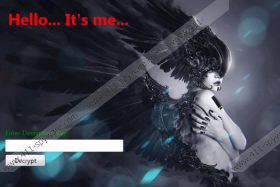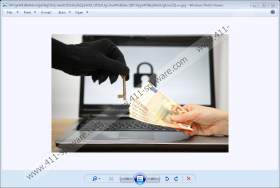Ctf Ransomware Removal Guide
Ctf Ransomware is a dangerous infection, and you might have let it in yourself. We cannot know for sure how it got into your operating system, but it is most likely that it was camouflaged as a normal file that was attached to a misguiding spam email. Do you remember opening a file and not facing what you might have expected? If you do, this might be how the devious ransomware got in. Soon after infiltration, it encrypts files that are considered to be more personal, simultaneously attaching the “.ctf” extension at the end of their names. This is why the infection is known by its name. According to our research team, this dangerous threat was created using the .Net framework, which has been employed for the development of various other threats, most recent of them being Fabsyscrypto Ransomware. Although removing Ctf Ransomware is not a huge challenge, especially if you are at least a little bit experienced, it is unlikely that you will jump to this operation because of your files. Well, whether or not you decrypt your files, deleting the ransomware is very important, and you have to do it fast.
According to our research, Ctf Ransomware can encrypt all .c, .cpp, .doc, .docx, .h, .pdf,.pptm, .pptx, .py,.txt, .xlsm, and .xlsx. Luckily, it should only encrypt files in %USERPROFILE%\Documents and %USERPROFILE%\Desktop directories. Of course, if most of your personal files are stored in these folders, you are in big trouble. Do you have backups? There is an array of different backup options you have, from external drives to online cloud storage. You can even back up your files for free, and so there really is no excuse for not backing up your files. If you have backups, you can delete Ctf Ransomware without any delay. If you want to check your backups to see if you have copies of all encrypted files, you should do so using a malware-free computer. What if backups do not exist? If they do not, you have no other option but to try to decrypt your files. Unlike most ransomware infections that we have encountered, Ctf Ransomware does not demand a ransom. This is good news because, in most cases, the creators of ransomware infections do not provide their victims with decryption tools and keys anyway. The good news is that there is a way for you to decrypt your files.
If you open the launcher file using a text reader or a hex editor, you can find instructions on how to decrypt the files corrupted by Ctf Ransomware. First, you need to retrieve your Media Access Control (MAC) address. Then you need to convert it into an MD5 number. If you are successful, you should be able to use this as the decryption key. The area for the decryption key is available via the “Hello… It’s me…” window. If you follow these instructions, you should be able to decrypt your files yourself.
How to decrypt files?
- Tap keys Win+R to launch RUN.
- Enter cmd and click OK to launch Command Prompt.
- Type getmac and tap Enter on the keyboard.
- Copy the address in the format XXYYZZAABBCC (without dashes).
- Visit http://www.miraclesalad.com/webtools/md5.php.
- Paste the MAC address into the String box to generate and MD5 number.
- Copy the number and Paste it into the Enter Decryption Key box on the ransomware window.
N.B. If that does not work for you, maybe you used the wrong MAC address?
While decrypting your files might be too complicated for you, deleting Ctf Ransomware is not that hard. Basically, you need to find and remove the file that has launched this infection. So, if the ransomware was unleashed via a corrupted spam email attachment, this is the file you need to eliminate. The guide below lists a few possible directories where this file might be found. Before that, you need to kill a process named “svchost,” and you have to be very careful about this task because legitimate processes have this name as well. If you right-click the process, and select “Properties,” you will find information that might help you identify the malicious one. If you are struggling to remove Ctf Ransomware manually, we advise leaving the task to legitimate anti-malware software.
How to delete Ctf Ransomware
- Tap keys Ctrl+Shift+Esc to launch Windows Task Manager.
- Click the Processes tab.
- Identify the malicious process by the name svchost (make sure it is malicious before killing it).
- Select the process and then click End Task/End Process.
- Tap keys Win+E to launch Windows Explorer.
- Enter %TEMP% into the bar at the top, and you will access this directory.
- Look for the malicious {unknown name}.exe launcher file, right-click it, and select Delete.
N.B. The malicious file could be found in %USERPROFILE\Downloads or %USERPROFILE\Desktop as well.
Ctf Ransomware Screenshots:




